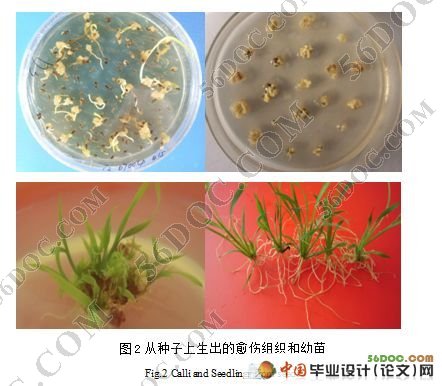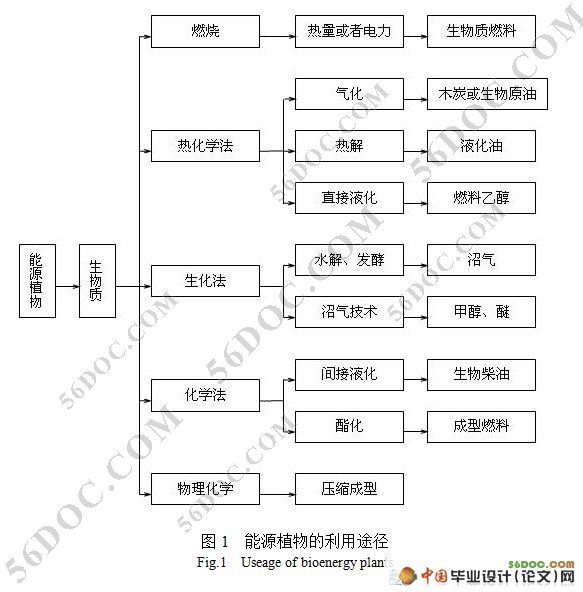摘 要:随着石油、煤炭和天然气等化石燃料的日趋枯竭以及生态环境的不断恶化,开发新的洁净可再生能源已成为全世界关注的战略重点。生物质能它是以化学能形式贮存于生物质中的一种能量,它直接或间接地来源于植物的光合作用,主要为植物能源。芒属植物(Miscanthus.)作为一种有潜力的能源植物受到了巨大了关注;同时,它还有改善环境与利用等其他的作用。为了进一步开发芒属植物,获得高产,抗逆性高,纤维含量高的新种质,建立外源基因转化体系,转化受体系统是其基础。本实验对芒属植物的种子、幼穗、芽等外植体在加入了2,4-D、6-BA的MS、NB、CC培养基上分别进行组织培养,筛选出最佳的培养基配方,提高外植体的诱导出愈率,建立芒属植物转化受体系统。
关键词:芒属植物;组织培养;转化受体系统。
Establishment Of Transformation And Receptor System Of Miscanthus.
Abstract: With oil, coal and natural gas and other fossil fuels are depleting and deteriorating ecological environment, the development of new clean renewable energy has become the strategic focus of worldwide concern. It is a form of biomass energy to chemical energy stored in a biomass energy, which directly or indirectly, from plant photosynthesis, mainly for plant energy. Miscanthus. as a potential energy plants has been a great concern; the same time, it also improve the environment and the use of other role. In order to further the development of Miscanthus., high yield, high resistance, high fiber content of new germplasm, the establishment of the foreign gene transformation system is the basis for Transformation System. The experiments on the seeds of Miscanthus., immature inflorescence, shoot substandard implants added 2,4-D ,6-BA of MS, NB, CC tissue culture medium, respectively, selected the best medium formula to improve the explants callus induction rate, the establishment of Miscanthus. Transformation and Receptor System.
Key words: Miscanthus.;Tissues culture;Transformation and Receptor system.


目 录 8000字
中文摘要………………………………………………………………………………1
英文摘要………………………………………………………………………………1
关键词……………………………………………………………………………2
1 前言…………………………………………………………………………2
1.1芒属植物概况……………………………………………………………2
1.1.1芒属植物的生物学特性……………………………………………2
1.1.2芒属植物的主要用途………………………………………………2
1.2能源植物的研究现状………………………………………………………4
1.3本实验的目的和意义……………………………………………………4
2 利用芒属植物种子幼穗诱导愈伤组织…………………………………………5
2.1试验材料……………………………………………………………………5
2.1.1 植物材料…………………………………………………………5
2.1.2 实验器材及培养设备………………………………………………5
2.2 试验方法…………………………………………………………………5
2.2.1 外植体的培养……………………………………………………5
2.2.1.1 培养基及培养条件………………………………………………5
2.2.1.1 试验过程…………………………………………………………5
2.3 数据统计及处理………………………………………………6
3 实验结果与分析…………………………………………………………………6
3.1种子为外植体诱导愈伤及分化增殖………………………………………6
3.1.1基本培养基和2,4-D不同浓度对愈伤组织诱导的影响…………6
3.1.2芽分化及增殖培养…………………………………………………7
3.1.3优选的最佳培养基培养芒不同材料………………………………8
3.2幼穗为外植体愈伤组织诱导及分化增殖…………………………………8
3.3腋芽为外植体诱导丛生芽………………………………………………9
3.4成功获得的试管苗………………………………………………………10
4 结论………………………………………………………………………………10
参考文献 ……………………………………………………………………………11
致谢…………………………………………………………………………………13
|


